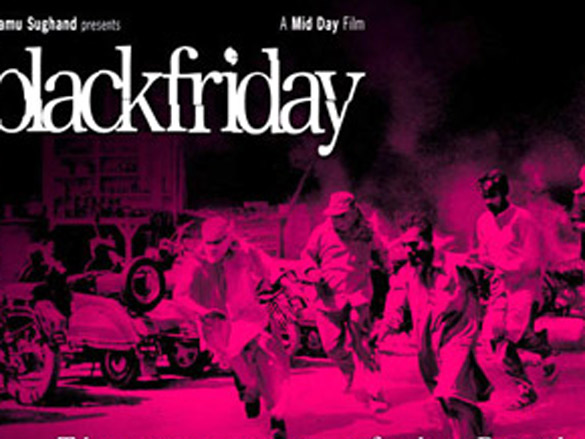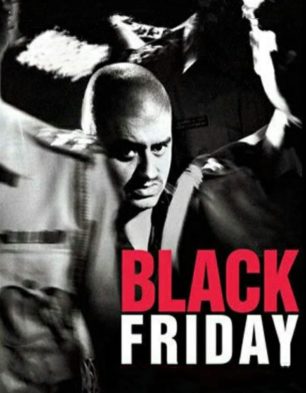On Friday, March 12, 1993, Mumbai, then known as Bombay was rocked by serial bomb blasts in its most densely populated areas. More than 250 innocent people died and hundreds more were injured. As fingers were pointed and law enforcement investigated the cause, Hussain Zaidi researched and documented the proceedings in tremendous detail in a book published two years ago. Based on the same book, Anurag Kashyap’s “Black Fridayâ€, which is struggling for an Indian theatrical release against the wishes of the Supreme Court of India, is not just a gutsy, gritty, and mind-boggling adaptation, but is also one of the finest films to come out of the Indian film industry in recent years.
As a writer and director, Kashyap tells his story unconventionally, breaking numerous cinematic norms, using a strong Cinema Verite style. The most unconventional aspect of the film certainly is the lack of a central protagonist. This forces Kashyap to juggle several points of view including those of Inspector Rakesh Maria (Kay Kay Menon), accused gangsters Dawood Ibrahim (Vijay Maurya), Tiger Memon (Pavan Malhotra), Dawood Phanse (Gajraj Rao), and their pawn Baadshah Khan (Aditya Srivastava). Given the Herculean task of effectively developing all these viewpoints and characters within temporal constraints, Kashyap emerges victorious, doing justice to them all, skillfully narrating the stories in a moderately paced episodic structure.
Realism has always been Anurag Kashyap’s forte, as is exemplified by his writing in Ramgopal Varma’s “Satyaâ€, “Kaunâ€, and “Shoolâ€. Now in the director’s chair, he takes his penchant for realism to more pronounced and captivating levels, manipulating the audience, placing them in the heat of the action on certain occasions, and relegating them into a voyeuristic viewpoint on others. Aarti Bajaj’s editing dexterously enables the director to develop this style, uncharacteristically holding longer on Cinematographer Nataraja Subramaniam’s wide, high angle crane shots, particularly during Maria’s investigations. Subramaniam coats the frame in heavy brown and red tones, bordering on a monochromatic, sepiaesque feel. The use of grainy stock and hand-held shots also add to the gritty tone of the film. Holding the realism of the film together is the superior quality of performance from a very low-profile cast. The immensely talented Kay Kay Menon and Aditya Srivastava excel in their respective roles, while Vijay Maurya’s resemblance to underworld don and international terrorist Dawood Ibrahim is shocking.
Despite such strong vision and treatment, “Black Friday’s†directorial voice is subtle and takes the form of an undertone. This in fact works to the film’s advantage as viewers are fed numerous facts and events unfolding constantly, the final judgment left to their intelligence to pass. The only didactic interference from Kashyap occurs in the closing montage of stills and documentary footage from the 1993 bombings and riots, set to Indian Ocean’s phenomenal track, “Bandehâ€.
Despite clearance from the Indian censor board, the Supreme Court of India has held “Black Friday’s†theatrical release for fear of this powerful film influencing the sentence that is yet to be passed on the case: a ludicrous excuse, considering Zaidi’s book has already been publicly accessible for over two years. After a Golden Leopard nomination at the Locarno International Film Festival and winning the Special Jury Award for best feature at the Indian Film Festival of Los Angeles this year, one hopes that international distributors notice this highly significant film and give it its much deserved opportunity at the box office.
N.B. This writer viewed “Black Friday†at its Los Angeles premiere during the Indian Film Festival of Los Angeles.
This is a flop movie.

